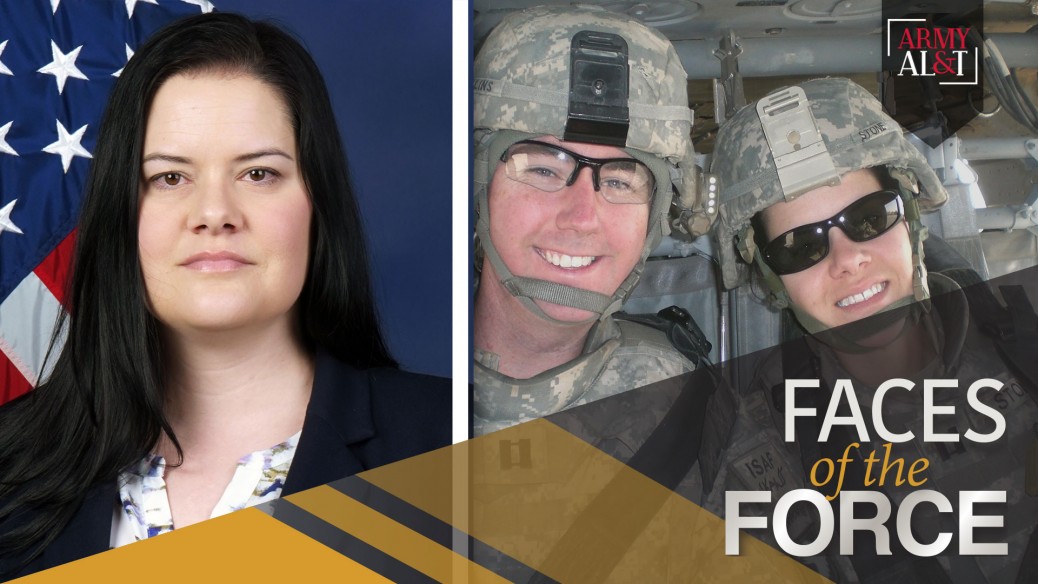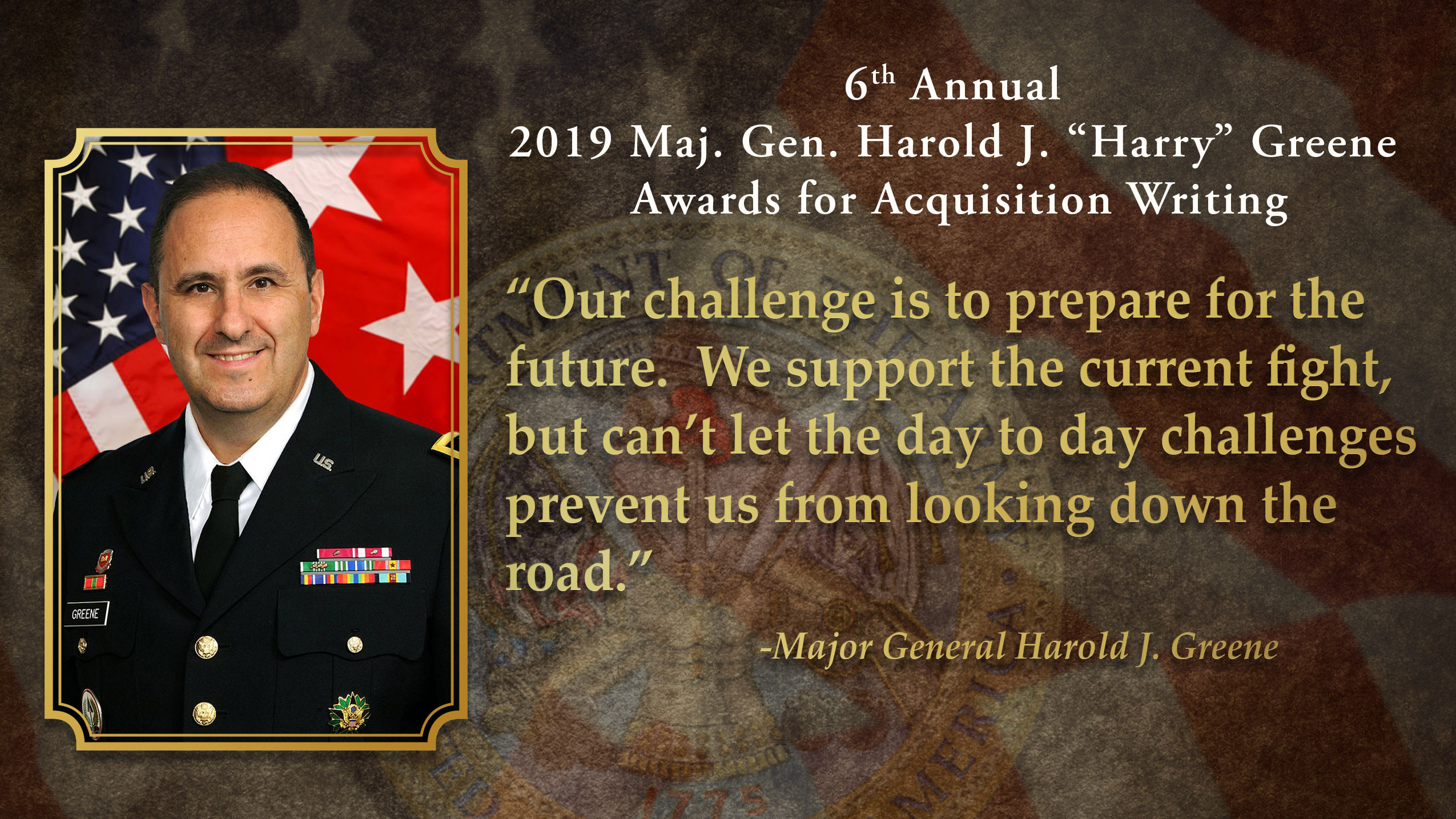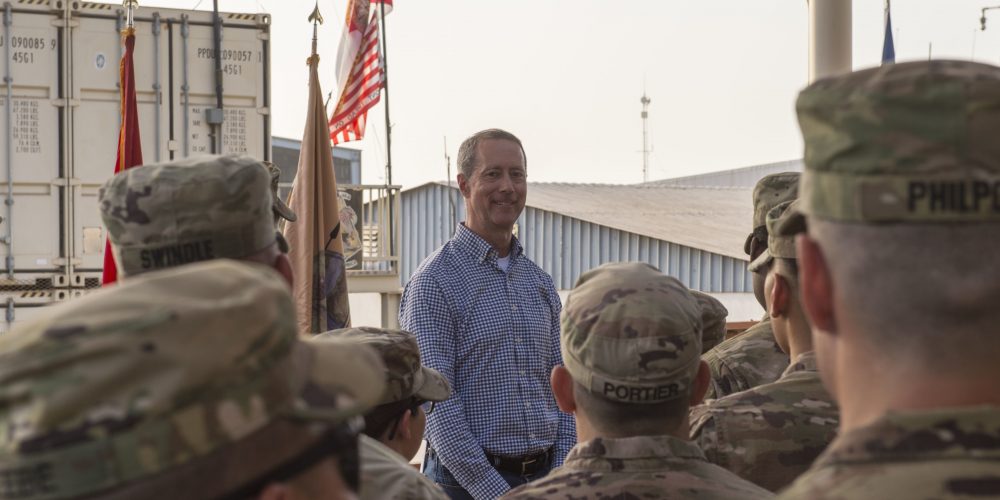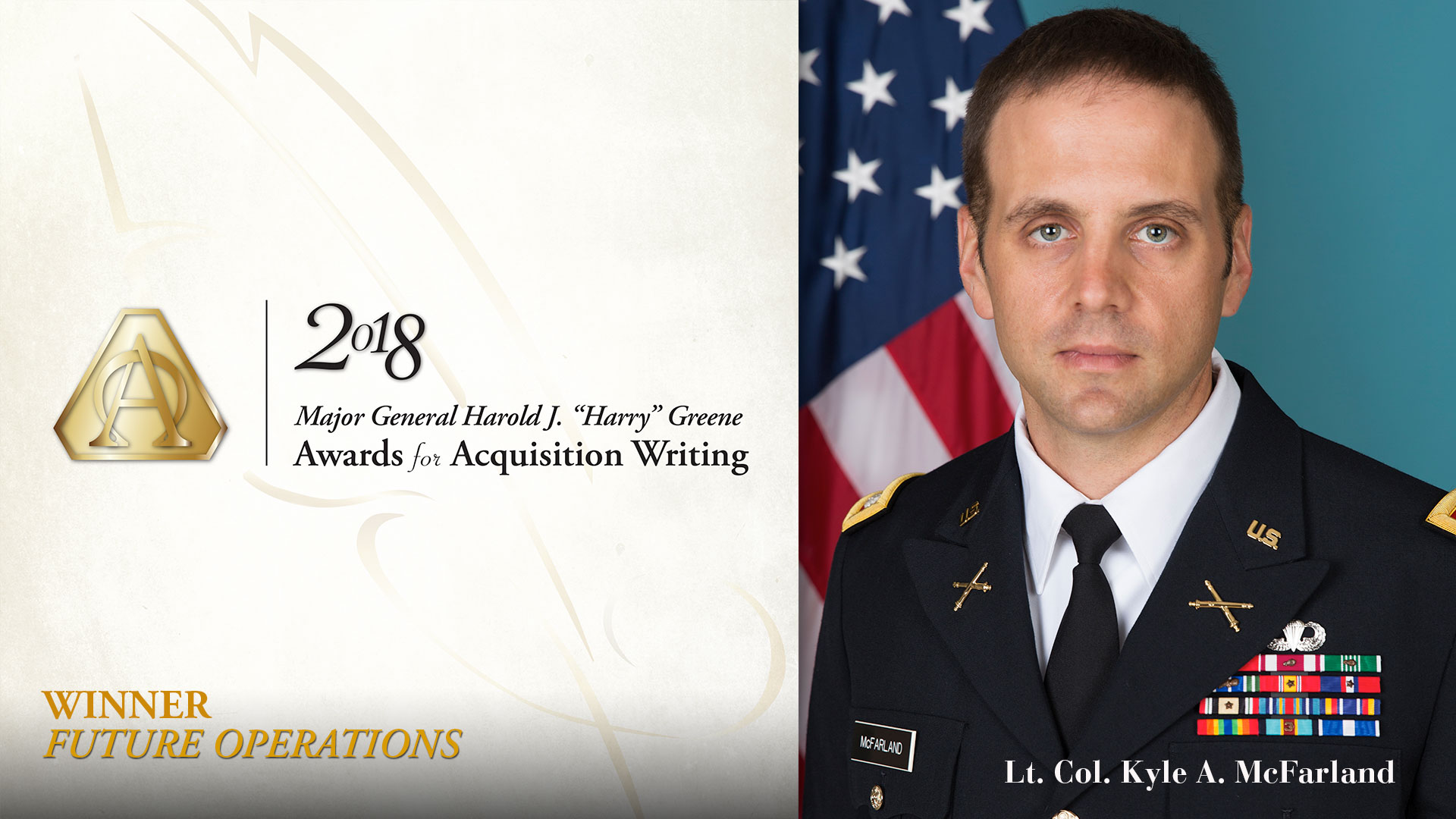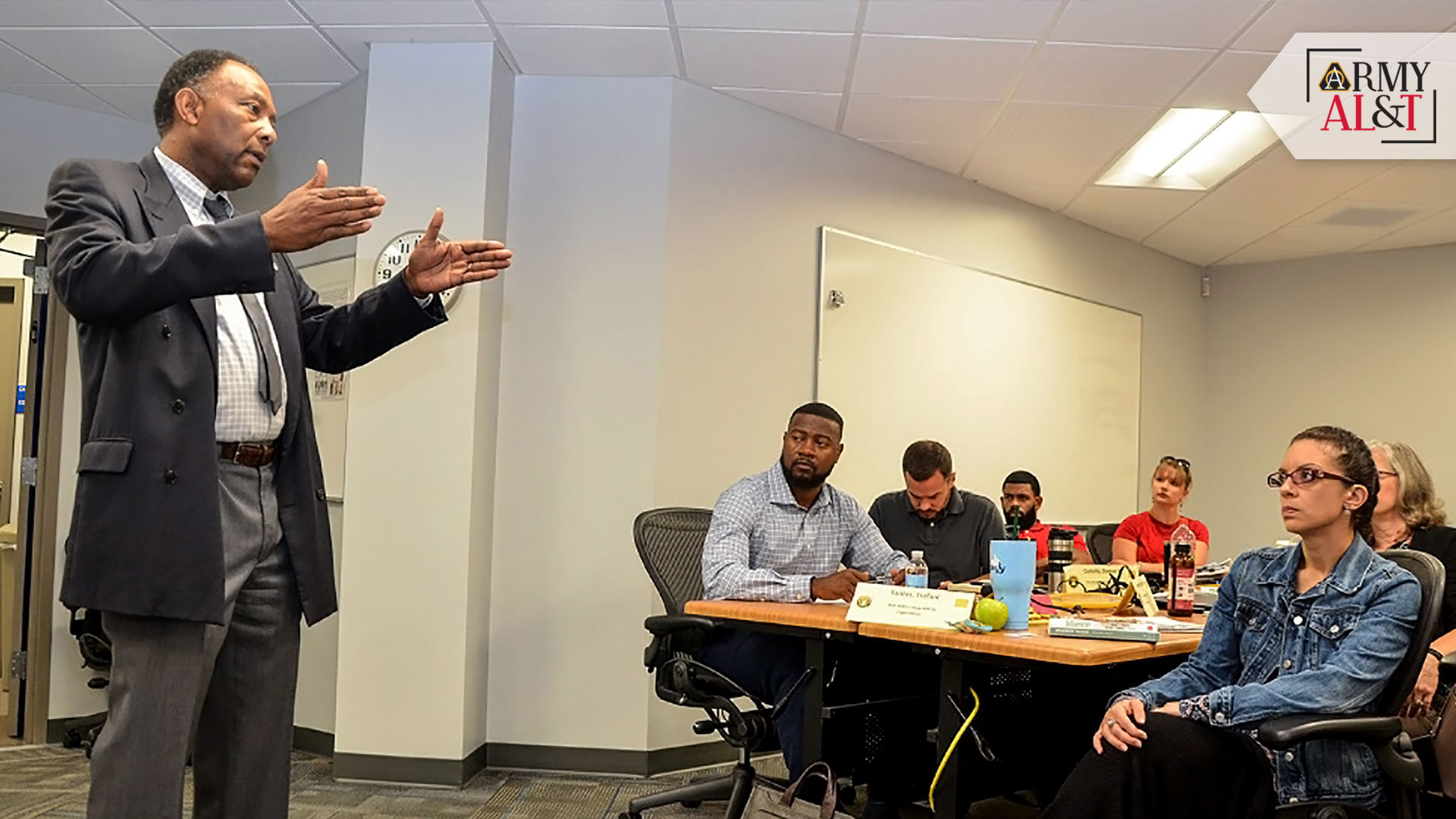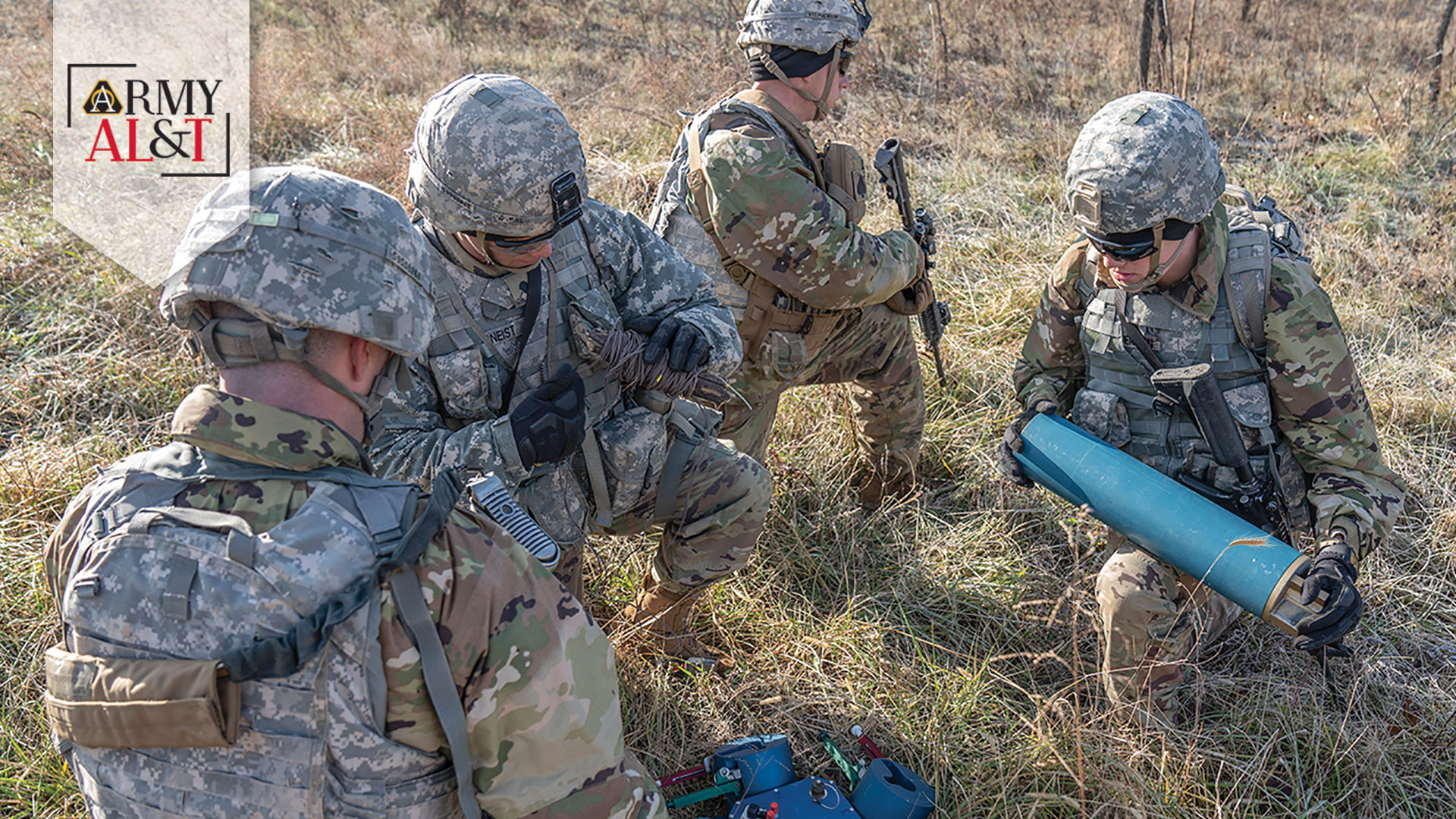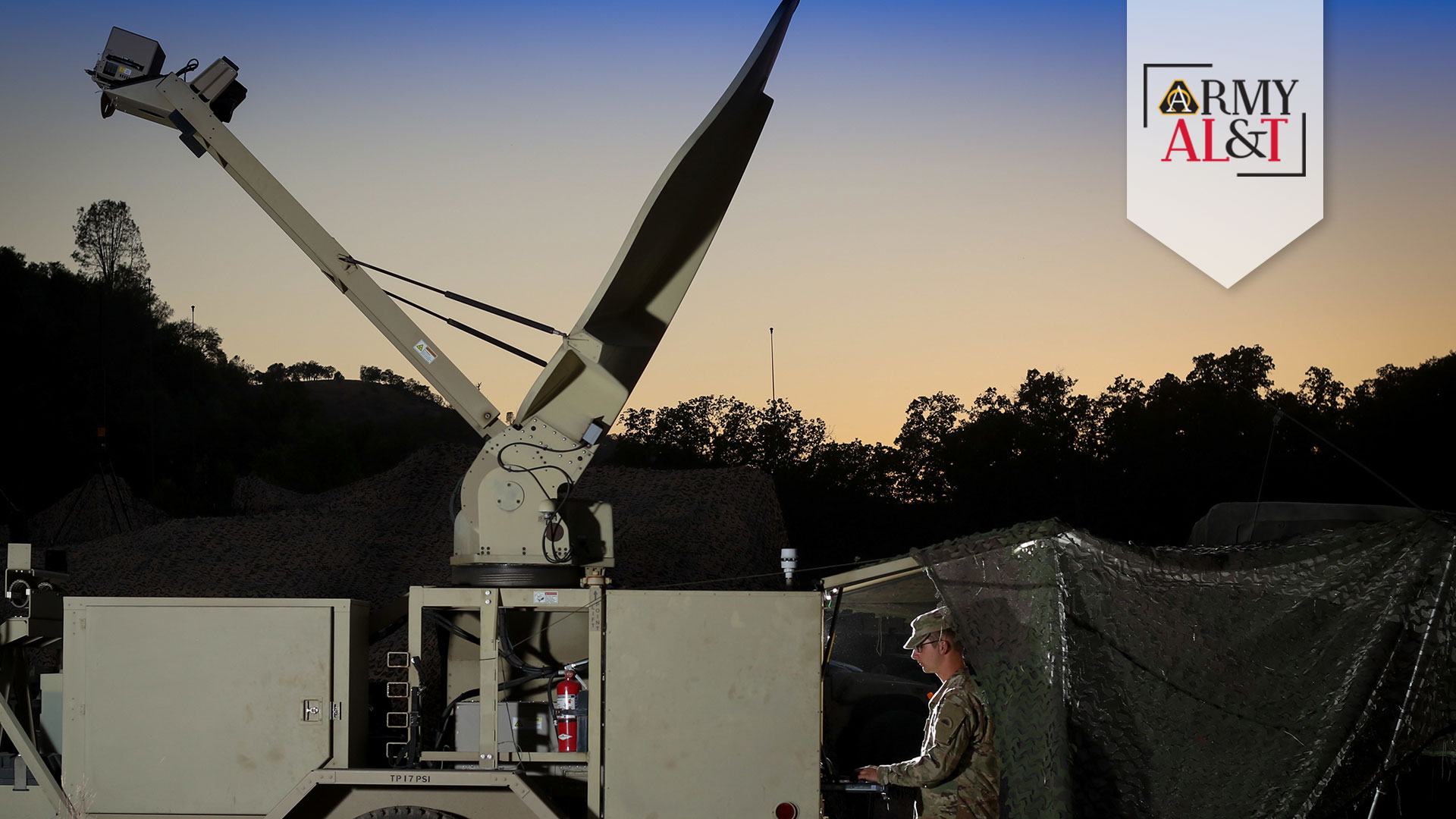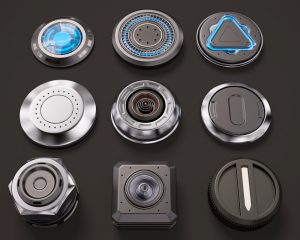By Susan L. Follett
Sarah Mullins has seen acquisition from a lot of different perspectives: During more than 11 years on active duty, she spent nearly eight years in the Signal Corps and then four years in the Acquisition Corps. She left active duty as a captain and returned to acquisition as an Army civilian. She now serves as deputy product officer for the Installation Information Infrastructure Modernization Program’s Product Office for Command Centers, within the Program Executive Office for Enterprise Information Systems (PEO EIS). Her husband, Maj. Jason Mullins, is also part of the acquisition workforce, and began his acquisition career as assistant product manager for Nett Warrior at PEO Soldier.
From those experiences, she has learned two things. First, it’s important to remain open to change, to rapidly adapt to new information and conditions. Second, Soldiers and civilians could stand to learn a little bit more about each other. “Soldiers don’t understand why it takes so long to get what they need. They don’t realize that everything they see is the product of the acquisition process, and they’re not familiar with the checks and balances of the system,” said Mullins.
“I’ve encountered many civilians in acquisition who don’t understand how the Army functions at lower echelons,” she added. “The Civilian Education System is a good start, but not enough. Acquisition civilians need to leave their desks and see how their work directly impacts the Soldier. I know that not everyone can travel internationally, but you don’t need to go overseas to see that—in many cases, you can visit an Army base in the U.S. and learn how the Army operates at the division and below.”
Now in her fourth year as an acquisition civilian, Mullins leads global supply chain and materials acquisition operations and spearheads development and implementation of acquisition strategies, spending plans and process engineering strategies. On the surface, her work is about using technology to connect the Army. “In truth, much of my time is spent on developing networks between diverse groups of subject matter experts to build coalitions,” she said. “By encouraging collaboration and building strategic relationships, we are able to accomplish the Army’s mission.”
Most people don’t know the scale of the work that goes into building the Army a modernized network infrastructure for global connectivity and critical cybersecurity, Mullins said. “They’re surprised at the number of teams of software and network engineers, program managers, logisticians, IT [information technology] specialists and cyber security experts working behind the scenes for the Soldier to connect the Army.”
Among the biggest projects in Mullins’ career is a tech refresh for the Strategic Command Center at the U.S. Southern Command (SOUTHCOM) headquarters in Miami, which was completed in August 2018. She managed the design, engineering, installation, test and delivery of an information infrastructure system tailored specifically for SOUTHCOM. The new system provides IT solutions to support DOD’s Global Command and Control System – Joint, which provides the communications, computing and data infrastructure that integrates and presents combat support information to the warfighter on a single computer using the Common Operational Picture – Combat Support Environment. “We were able to see combatant commanders use the system in an exercise with deployed forces—that kind of firsthand experience is invaluable for our team,” she said.
Mullins noted that her outgoing personality facilitates cooperation and motivates team members. But it wasn’t always the case, she said. “When I first joined PEO EIS as a Soldier, I asked people a lot of questions about what they were doing, and some people were a little defensive. They thought I was trying to take their job, when in reality I was trying to understand how all the pieces fit together.” PEO EIS’s structure helped with that, she said, noting that the organization has G-1, -2 and -3 sections similar to an Army unit. She also learned that working with civilians necessitates a different style of communication. “In an Army line unit, you might have disagreements with your fellow Soldiers but we all understand that we have each other’s backs. In an acquisition organization that’s mostly civilians, it takes longer to build trust. I’ve learned how to be a better communicator and the importance of developing relationships.”
Her work requires her to identify the factors impacting the project and to act quickly to gain cooperation and build consensus, she explained, as well as creative tension and the free expression of different opinions. “But as a leader, I need to anticipate when to take steps to prevent counterproductive confrontations in order to manage and resolve conflicts constructively.” A little humor helps, she found. “I use humor to help others to remain resilient, so they can recover quickly from setbacks and remain optimistic and persistent, even under the adversity of continuously changing environments.”
For Mullins, being part of the Army Acquisition Workforce “requires an entrepreneurial spirit. The Army’s combat readiness depends on us to identify new opportunities to develop or improving products or services. We need to rapidly identify and analyze problems, weigh the relevancy and accuracy of all available information, and then take the necessary calculated risks to accomplish the Army’s mission.”
Accomplishing that mission requires the ability to understand and apply Army acquisition principles, procedures, requirements and policies, she said, “to develop new insights into unique situations. You will need to question conventional approaches and encourage your teams to seek out innovative solutions to implement.”
Sarah Mullins
COMMAND/ORGANIZATION: Product Office for Command Centers, Installation Information Infrastructure Modernization Program, Project Manager for Defense Communications and Army Transmission Systems, Program Executive Office for Enterprise Information Systems
TITLE: Deputy Product Officer
YEARS OF SERVICE IN WORKFORCE: 7
YEARS OF MILITARY SERVICE: 11
DAWIA CERTIFICATIONS: Level III in program management and Level I in information technology; Army Acquisition Corps member
EDUCATION: Master of public administration in homeland security, Clemson University (expected August 2019); B.S. in criminology, Florida State University
AWARDS: Bronze Star Medal, Meritorious Service Medal, four Army Commendation Medals, three Army Achievement Medals, Valorous Unit Award, National Defense Service Medal, Afghanistan Campaign Medal, two Iraq Campaign Medals, Global War on Terrorism Expeditionary Medal, Global War on Terrorism Service Medal, Army Service Medal, three Overseas Ribbons, NATO Medal

